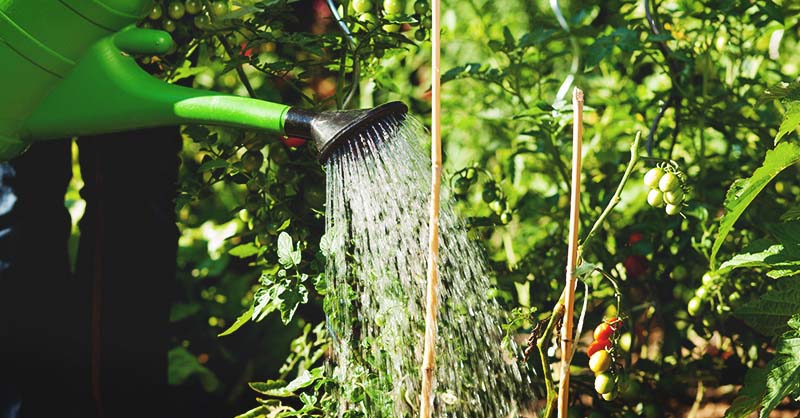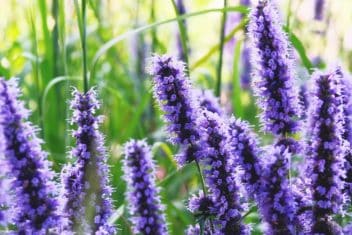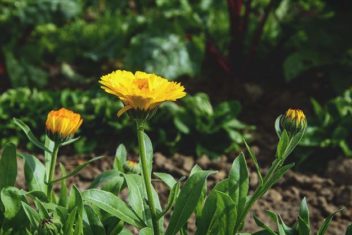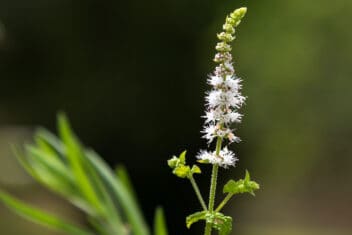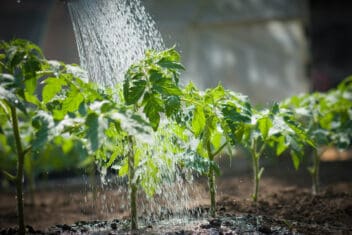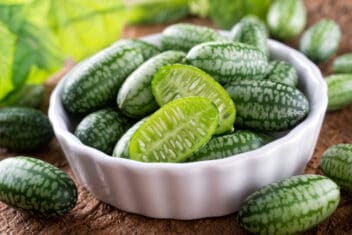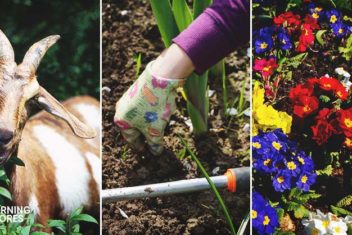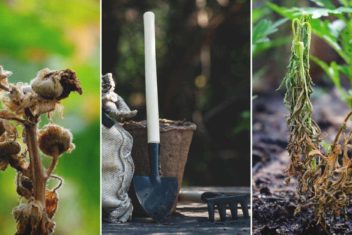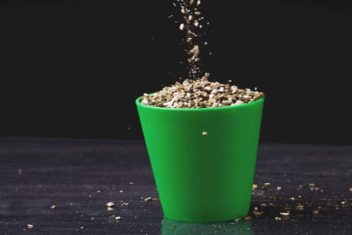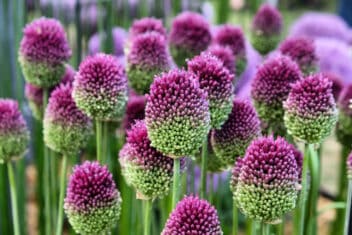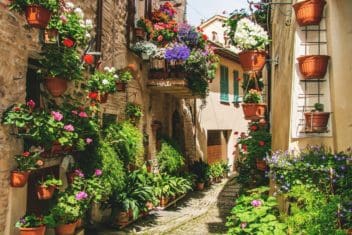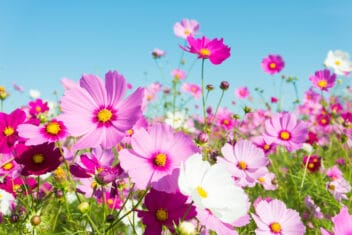Do you enjoy growing a vegetable garden? What about growing beautiful flowers all around your yard?
Planting can be time-consuming in the beginning but also rewarding. The trick is making sure you care for your plants well.
One of the main parts of caring for plants is knowing how to water them and when to do it. Plants need water, as we do.
I wanted to share with you a few tips on when to water your plants. Whether you’re a flower gardener, a vegetable gardener, or someone who has a few indoor plants, you should find value in learning when is the best time to give your plants a vital ingredient for their survival.
Here’s what you need to know:

When to Water OUTDOOR Plants
We’ve all asked ourselves when the best time is to water the garden. Do we wake up early in the morning and water while drinking our coffee?
Or do we wait until the afternoon to give our plants all night to drink in the water? Watering doesn’t have to feel complicated with these few tips:
Watering in the Morning
1. The Advantage
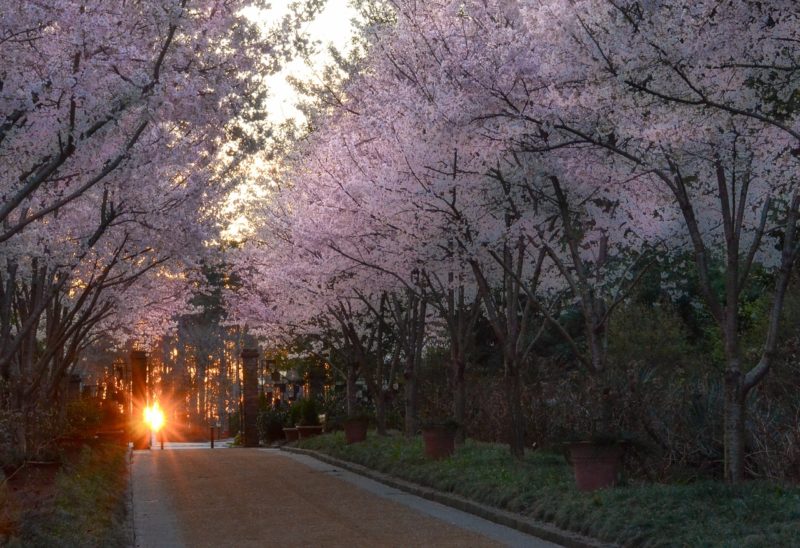
If I were going to tell you there is an absolute best time to water your garden in the day, I’d have to say the morning is it. I’m not saying this is the only time you can do it because we all know schedules sometimes don’t allow for the most optimal time.
However, I am saying if you’re able to water your garden in the morning, you probably should. The reason being is the morning is cool. This is great for your plants because the water won’t evaporate as quickly.
Keep in mind, the earlier you’re able to water in the morning, the better off your plants are going to be. The temperature is mostly cooler in the wee hours of the morning, and it gives the plants longer to soak in the water before the heat falls on them.
2. Don’t Believe the Hype
I water my plants in the morning. It’s the most convenient time for me during the day because I wake up first at my house. I can get this chore done while the coffee is brewing, and my family is sleeping.
However, I didn’t do this for many years. I was under the impression; if I watered in the morning and didn’t get the timing exactly right, I would cause my plants to burn up. The sun would obliterate them.
Because I didn’t want to lose my garden, I’d put off watering until nightfall.
The truth of the matter is you have to live someplace with direct enough, hot sun for it to be able to scorch your plants in the first place.
Furthermore, even if you do live in these conditions, the water will evaporate before the sun can use the water to scorch the plants.
In short, most of us don’t have to worry about scorching our plants.
3. The Catch
Though I’ve told you to water your plants in the morning, there is a catch. You must water your plants early enough in the morning for them to be able to absorb the water.
If you wait until the sun is up in its entirety and bearing down on them, the water will evaporate before the roots have the opportunity to drink it in.
When this happens, your plants will wilt because they aren’t getting any water. If you’re going to water in the morning, be sure you’re an early riser, or your garden will suffer.
Watering in the Evening
1. Sun is Essential
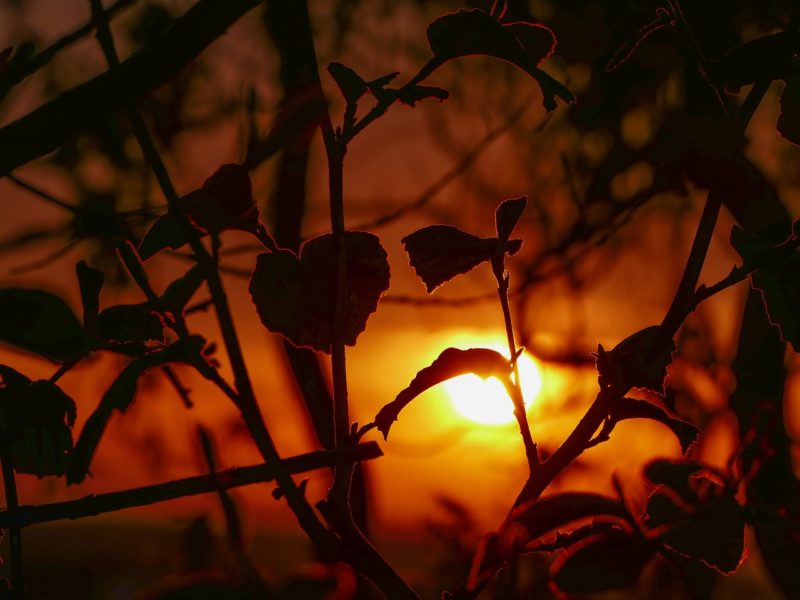
Some people aren’t able to water their plants in the morning. If you have to be at work early, have the kids to school early, or just aren’t a morning person, watering in the evenings could be the better or only option for you.
Your plants won’t suffer as long as you water them correctly. It’s important to water your plants after the majority of the heat of the day has left your area.
If you water when the sun is still blazing hot over your garden, the water will evaporate before your plants get to drink it.
However, you need to water early enough where your plants have time to dry. When you water, the foliage of your plants will get wet. This is a problem if night falls and your plants have wet leaves.
This is the perfect scenario for a fungus to form on your plants. The key to watering at night is watering late enough to where the water won’t evaporate, but early enough to where your plants have time to dry to avoid disease.
2. Water with Care
As I mentioned, if you water your plants to where the foliage gets wet you must give them enough time to dry, or you could set your garden up for failure.
However, you can change up how you water your garden to avoid this issue altogether. If you decide to use soaker hoses or an irrigation system, the foliage shouldn’t get wet.
With this, comes a greater window of opportunity to water your garden at night without the risk of harming it.
Still, I will say, if you grow a large garden (like I do) I realize, it isn’t as affordable to water with an irrigation system or soaker hoses in comparison to using a couple of sprinklers.
Do what you can within your budget, but keep in mind how to water thoroughly and when the appropriate time is.
Tips for Better Watering
1. Infrequent is Best
Regardless of when you decide to water your garden, remember watering your garden infrequently is better.
When you water your garden a couple of times a week, you’ll need to water it deeply. Be sure every area gets an inch or two of water per watering session.
This is better than having multiple shallow watering sessions. It ensures the plants get what they need.
2. Only a Few Inches
As I mentioned above, plants only need an inch or two of water per week unless you’re in the middle of a significant heat wave or drought.
It’s a good idea to put a rain gauge in your garden to keep track of how much water your garden receives in a week.
If it rains throughout the week, you may not need to water. A rain gauge will help you to monitor this situation easily.
3. Mulch is Your Plant’s Friend
Remember to mulch around your plants. It not only helps to deter weeds, but it also helps the plants retain moisture and keep the soil cool around it.
There are many options for mulch, and many of them can be found in your yard. By applying mulch, you’re helping your plants tremendously.
When to Water INDOOR Plants
When I was younger, I couldn’t keep any plant alive, but especially not a houseplant! I didn’t realize until later what I had been doing wrong.
If you’re struggling to keep your houseplants healthy, consider these few tips:
1. Water the Soil
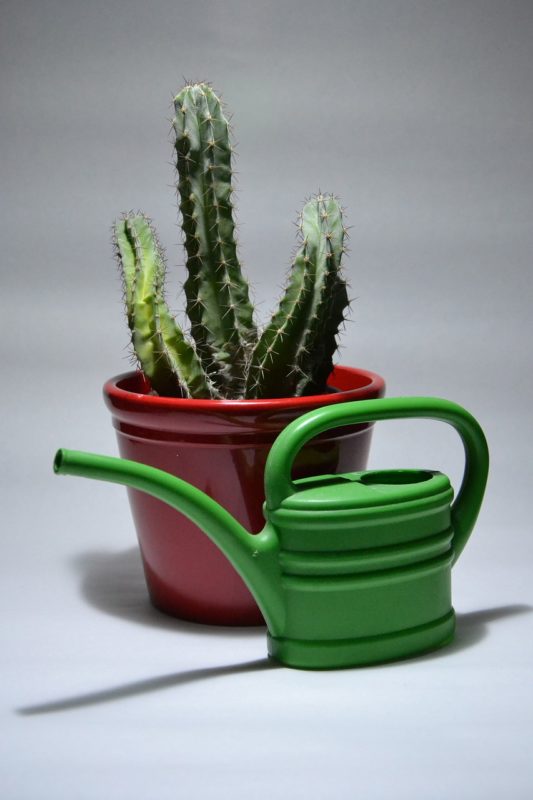
One of the easiest ways to water your houseplant is by pouring water over the soil at the base of the plant. You don’t want to wet any of the foliage when doing this.
By applying water directly to the roots of the plant, you’re ensuring adequate amounts of water are applied.
2. Water from Beneath
Some people say this method of watering is tricky because you run the risk of overwatering. However, it’s my favorite method of watering because it allows the plant to suck up water as it goes.
When you water from beneath, you’ll need to place your planter (which must have drainage holes in the bottom) in a saucer of water.
If you didn’t buy a planter which came with a saucer, I’ll use a cake pan and place my planter inside of it.
Either way, place a shallow amount of water in the cake pan. If you don’t overdo it when watering, your plants should be fine.
When you let your plant sit in too much water for a long period, the roots may rot.
Water shallowly with this method, and you should be fine.
3. Consider the Type of Water
Houseplants are different than garden plants. They care about what type of water they receive. If you live in the city, the chances are you receive water from your city.
When you receive water from your city, it probably has chlorine in it. If you apply chlorinated water to certain plants, they won’t react well. A Peace Lilly is an example of a plant that doesn’t respond well to waters with chemicals in them.
It’s best to water houseplants with distilled water. If you can’t use distilled water, try to leave your tap water sitting out on the counter overnight.
This will give the chlorine an opportunity to evaporate.
However, if you’re someone (like myself) who has their own well, you can use the water which comes from your faucet.
4. Pick the Right Containers
I mentioned above the idea of using a planter that has drainage holes. If you can, plant any houseplant in a planter with drainage holes.
It’s essential for the plant to be able to take in what it needs and allow the rest of the water to drain out.
If the water can’t drain, the plant becomes waterlogged, and it will die. Don’t risk it.
5. Check Your Soil
Finally, this tip for when to water your houseplants is what allowed me to begin growing gorgeous plants indoors.
I stopped worrying I wasn’t giving my plants enough water and began checking the soil. When I’d walk by my plants, I’d stick a finger in the pot.
If the soil still had moisture in it, I knew I didn’t need to water it. When the soil became dry, I knew I needed to add water to it.
Most houseplants die because they receive too much water. If you judge by the soil, you shouldn’t have this problem.
Well, you now know when you should water your plants indoors and outdoors. Hopefully, you found a tip that will help you to gain confidence when caring for your plants this growing season!
